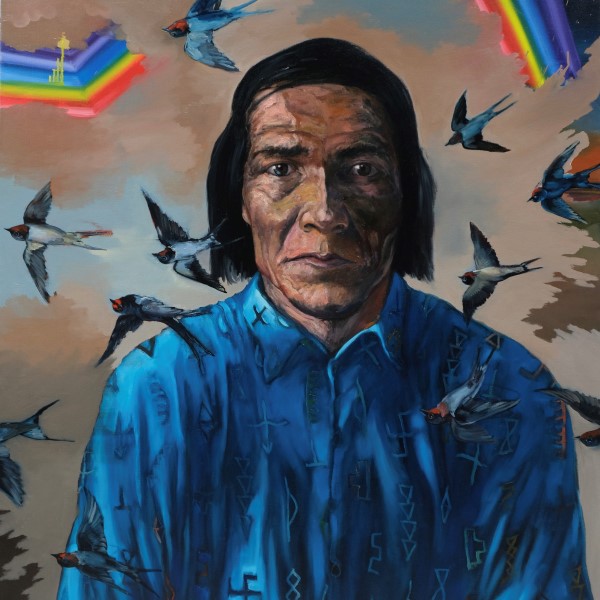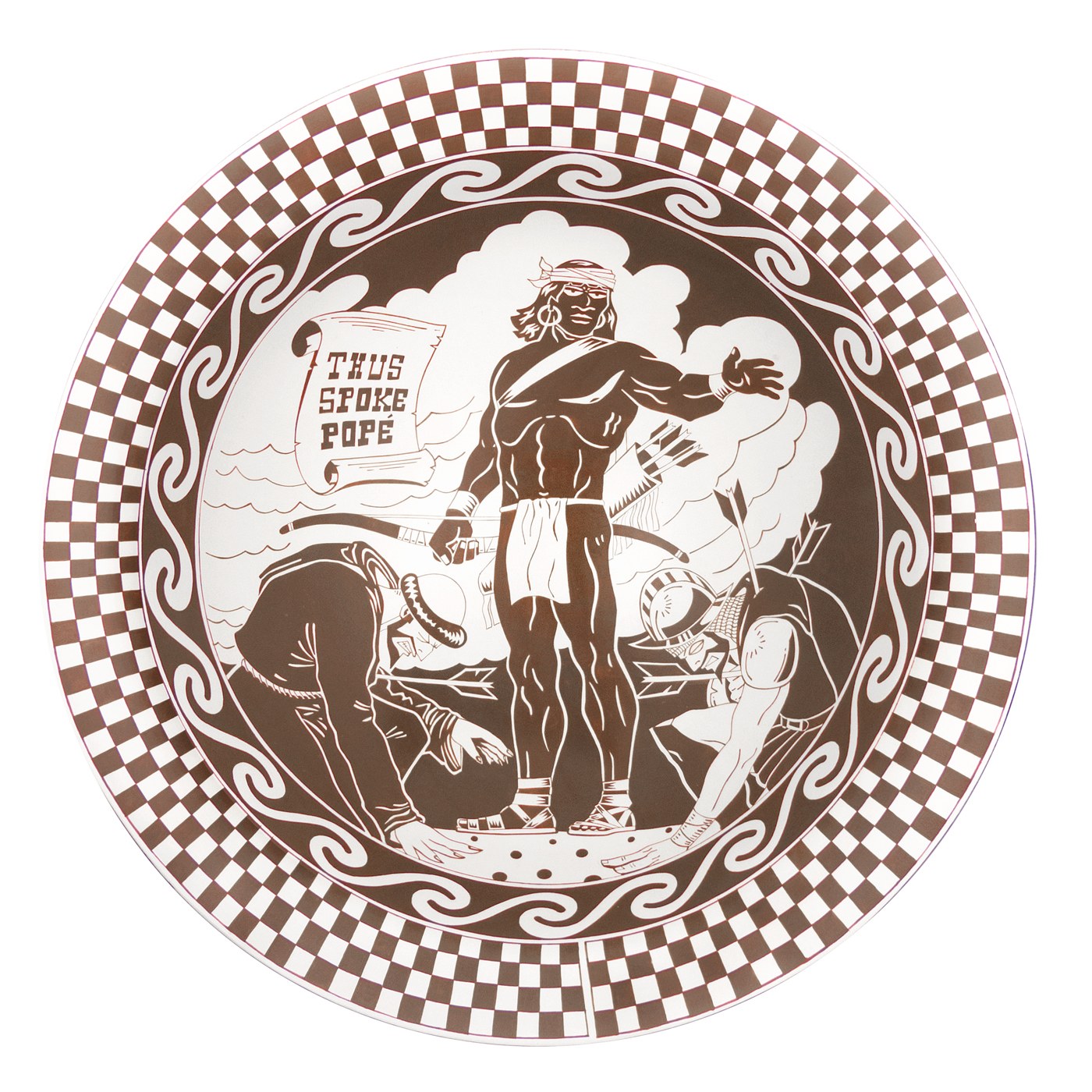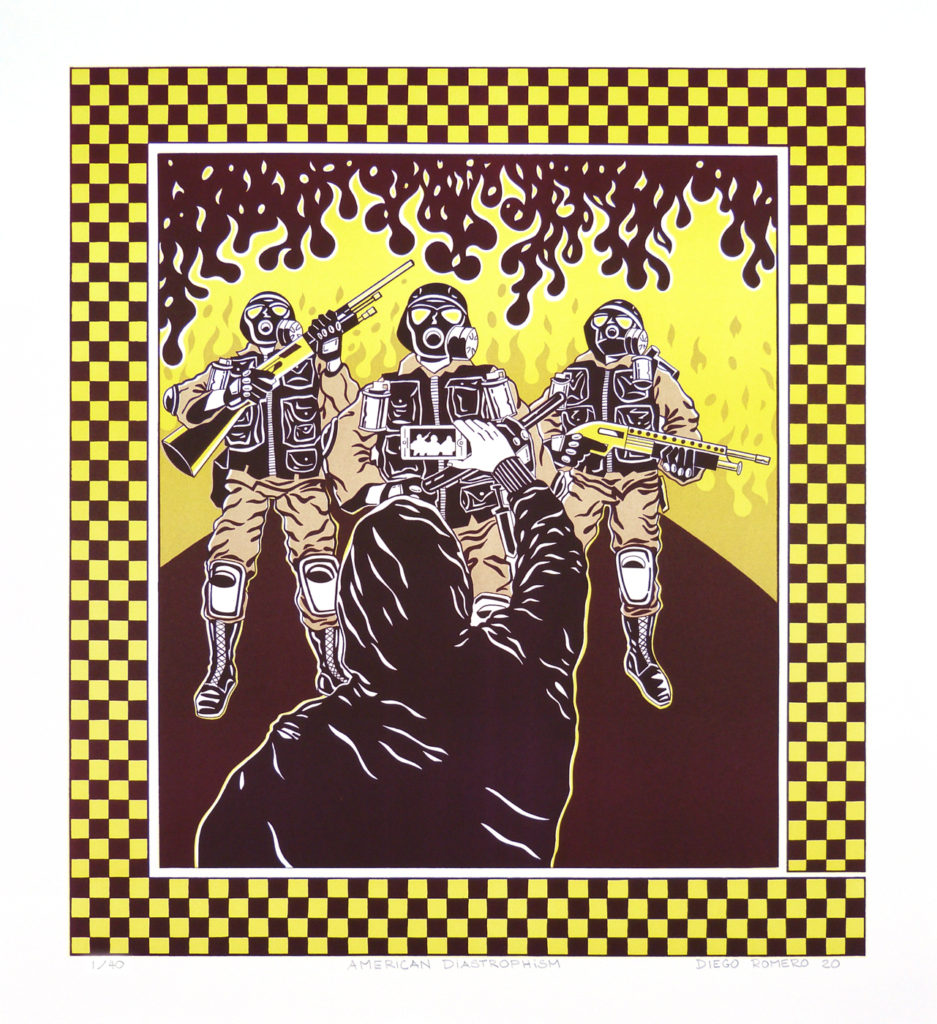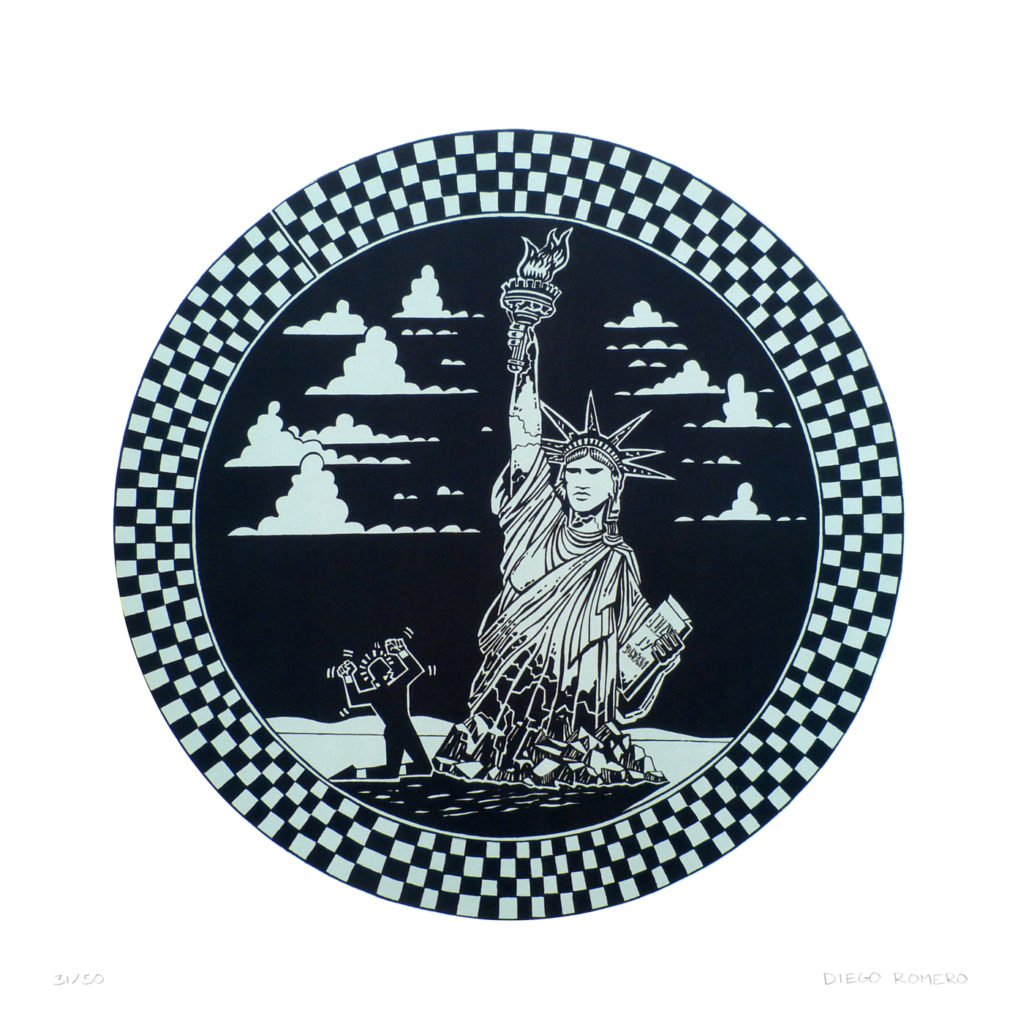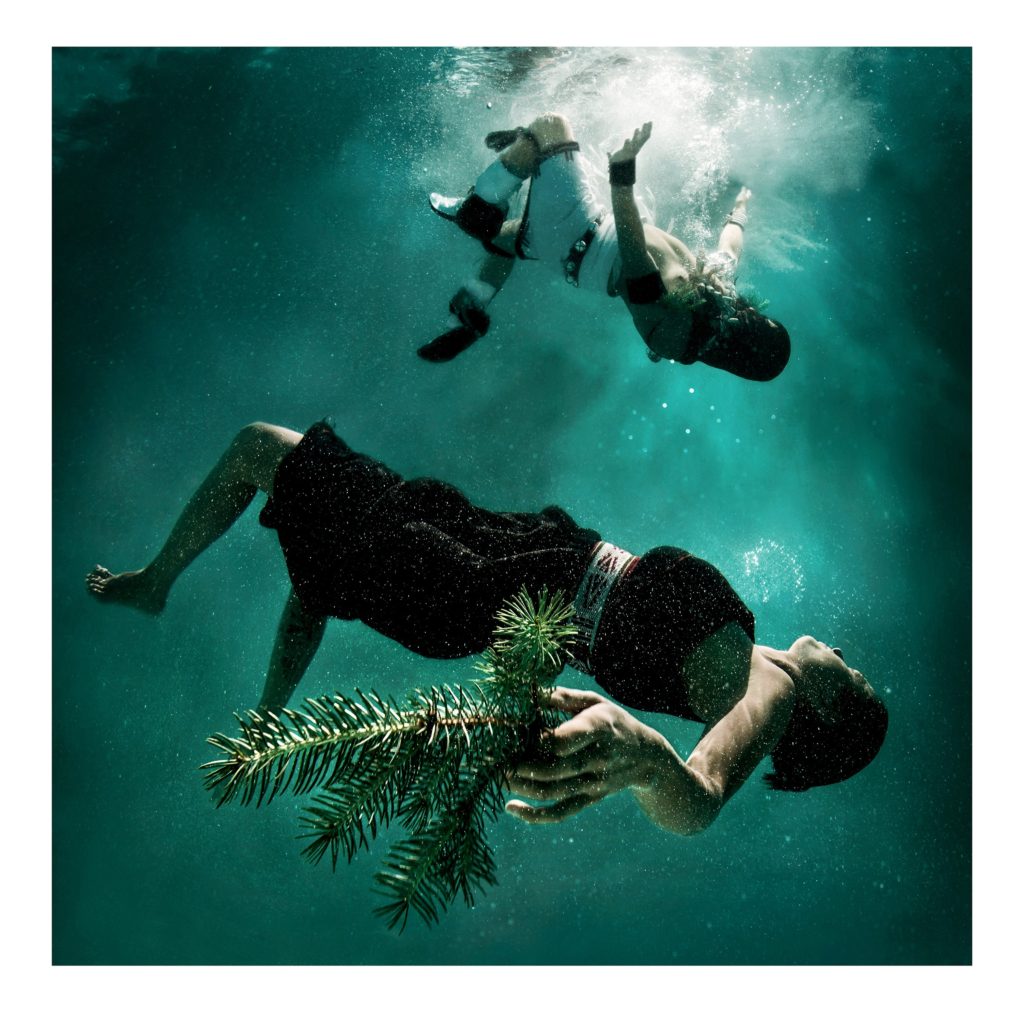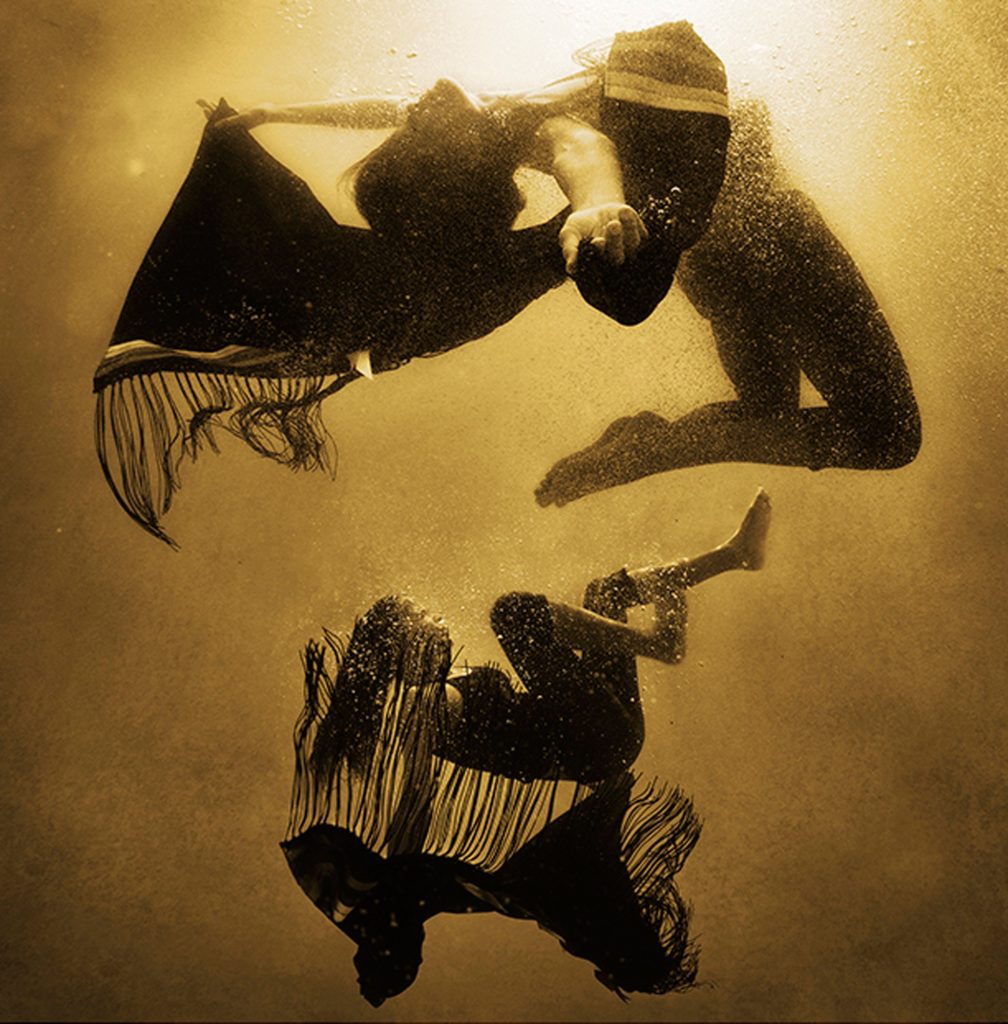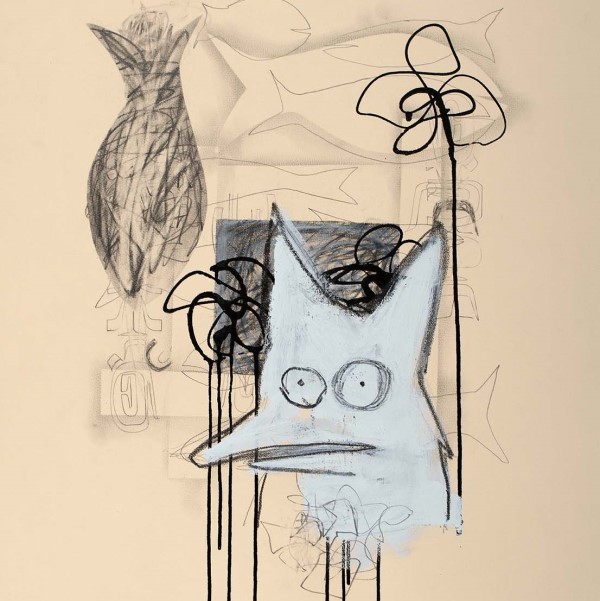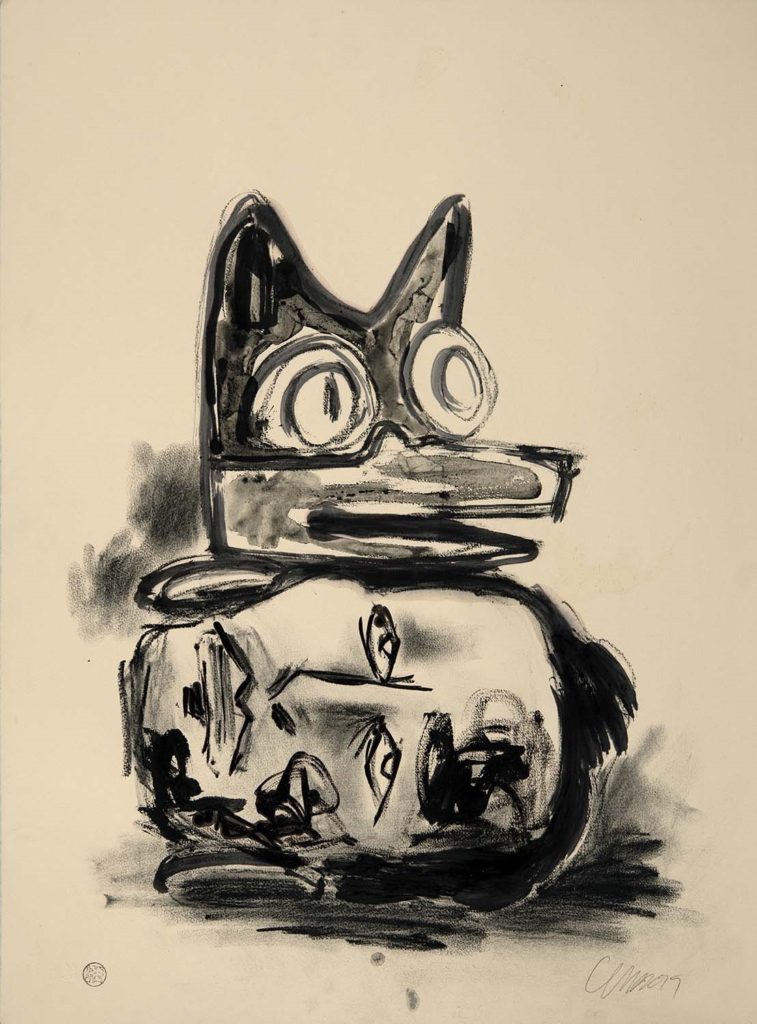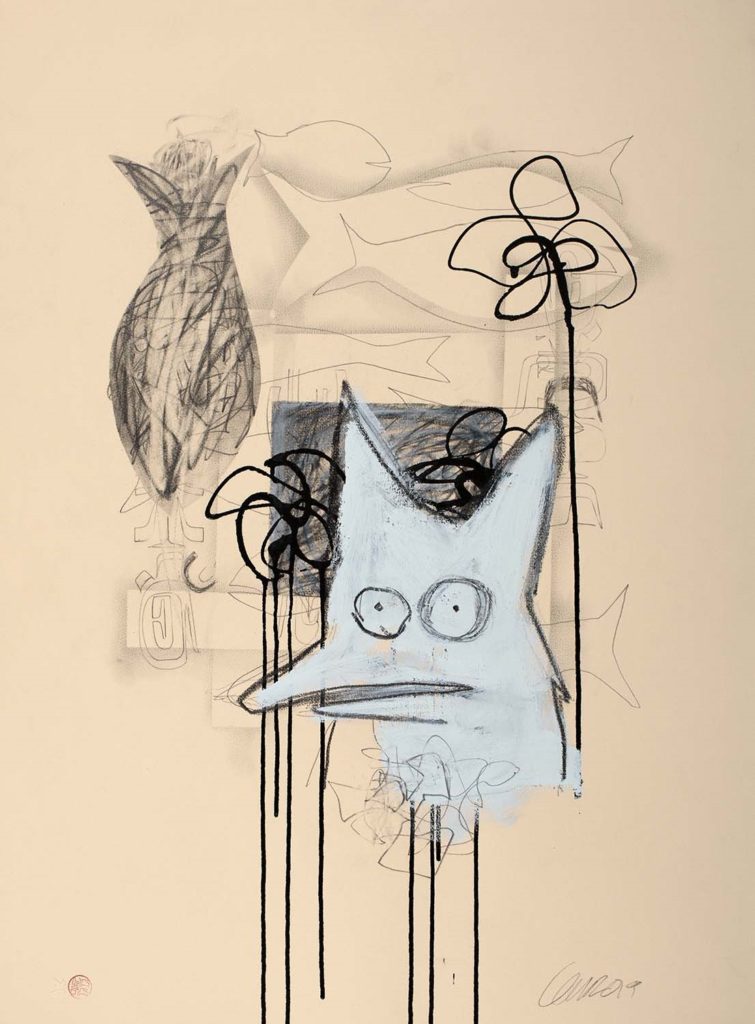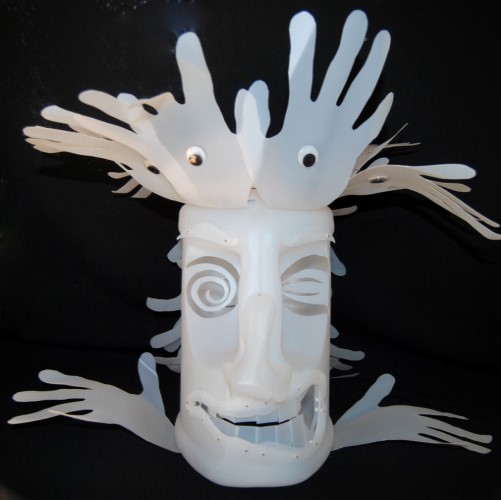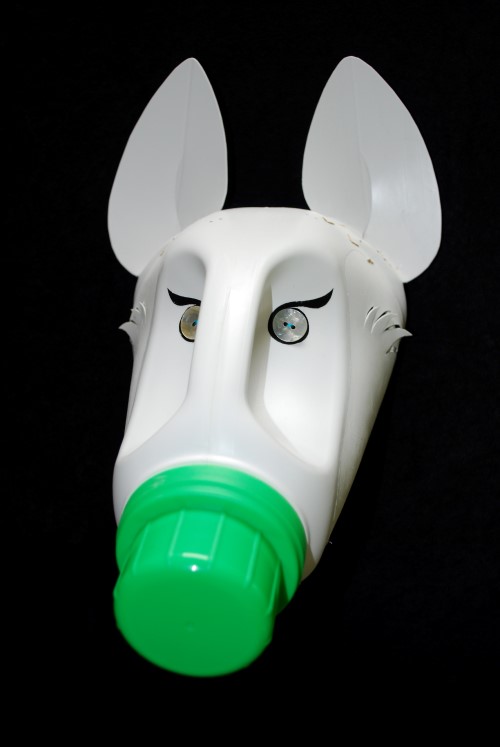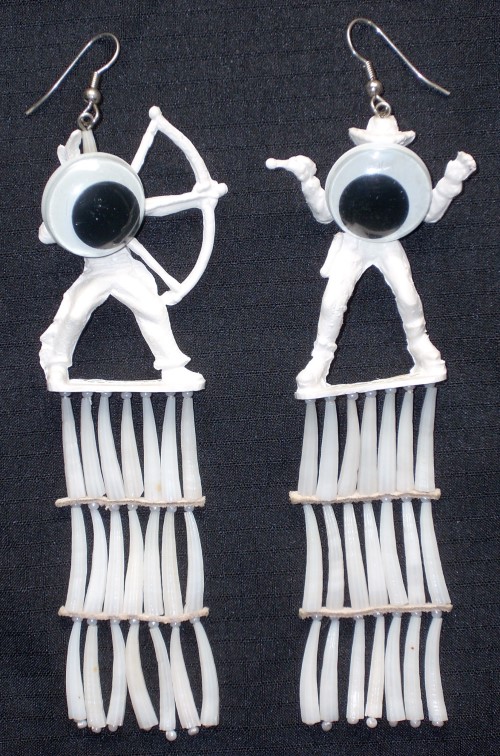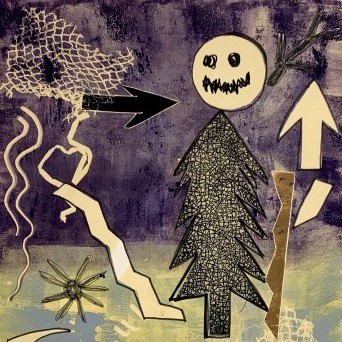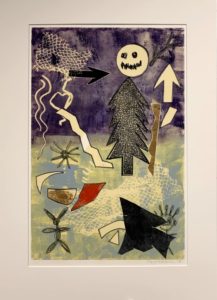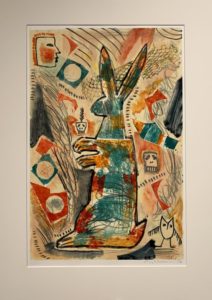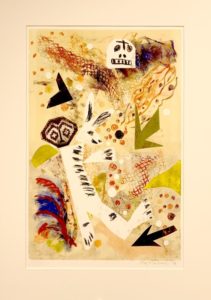Navajo artist Steve Yazzie is circling back to painting after year of exploring video and film and installation art. I first saw Steven’s work at the museum at the Institute of American Indian Art. He was part of the show curated for Crystal Bridges by Mindy Besaw, Candice Hopkins and Manuela Well-Off-Man, called Art for a New Understanding, Native Voices, 1950 to Now.
The work they had was an installation of his Drawing and Driving project. He had built a cart and attached a small easel to the steering wheel and frame. The idea was to hop on and set off down a hill and at the same time, start sketching what you saw flying by at ever increasing speeds. Fun. Harrowing. But, yeah, fun!
As part of the project, which began at a residency at Skowhegan School of Painting and Sculpture. It grew into a larger venture when he took his vehicle to other sites in the West and invited fellow artists and friends to hop on board and give it a go. And though the idea may seem absurd–attempting to draw while steering a cart down a hill–it’s kind of how we’re seeing the land, whistling down the highway and top speed, glimpsing bits and pieces out of the corner of an eye. We take it all for granted, so why not draw and drive, if only to scare the bejesus out of yourself and, maybe, snap yourself out of the trance of modern life if only for a short, rough ride?
The painting in Allegories of Transformation is part of Steven’s return to the studio to paint. Check out his website for his many videos and other paintings. And, of course, to read more about Steven, go to his site and ours at the PACE Center.
